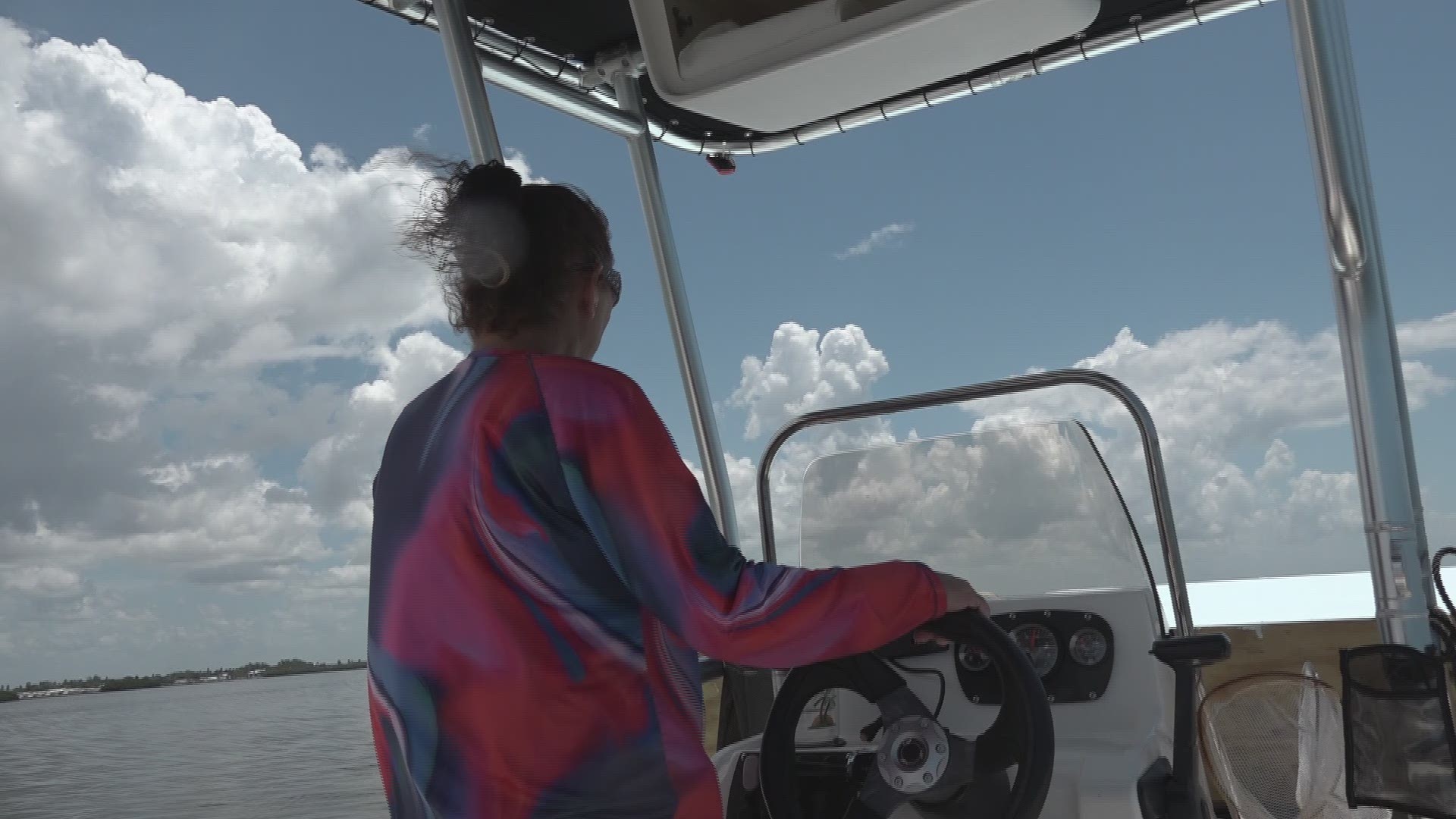SARASOTA, Fla — Red tide might be gone, but we’re still feeling its impact.
FWC is focusing its attention on horseshoe crabs. They‘ve been around for millions of years but how did they handle red tide?
FWC needs your help to learn more about these unusual creatures.
At the peak of red tide, one would see horseshoe crabs floating on the water’s surface.
When we took a boat tour last fall, Captain Kim Ibasflean said she knew the bloom was a bad one when horseshoe crabs were impacted.
“There’s a horseshoe crab there, there, there,” Ibasflean pointed out.
So many of them were dead and floating in the water on that August day.
Toxin levels were higher than they could handle, and these “living fossils” that have been around for more than 400 million years were not fast enough to get out.
FWC doesn’t know how many died, and with limited money and Florida’s expansive coastline, they can’t keep tabs on these horseshoe crabs. So now they are asking for your help through the Florida Horseshoe Crab Watch program.
“FWC encourages citizen scientists to report when they see horseshoe crabs during breeding activity,” says Stephanie Kettle with Mote Marine.
Kettle says migratory birds plan their flight path based on where horseshoe crabs lay their eggs; it’s their food source.
“It happens usually during a new moon or a full moon is when you’ll see horseshoe crabs breeding on the beach,” explains Kettle.
And their blue blood — yes BLUE -- is also vital for our health.
Kettle says, “There’s a substance in their blood used as a test to see if there’s bacteria in vaccines or injections. If you’ve received a shot to get better or as a vaccine, you’ve benefitted from horseshoe crabs.”
Visitors in the Mote aquarium got to learn more about them:
“Their tail is not dangerous at all. It’s used when they flip themselves over they use the tail to flip themselves back,” says Kettle. She says they’re safe to touch too.
“Their spikes here are fleshy and soft … it looks menacing but it’s not at all. They’re really important to our ecosystem and have lasted millions of years.”
Despite their name, they’re actually not crabs. Mote says horseshoe crabs are more related to spiders and scorpions.
FWC says once they identify spawning beaches they can conduct more regular surveys and tagging through the Florida Horseshoe Crab Watch program …. and understand their population and movement.
You can learn more about the horseshoe crab here.
What other people are reading right now:
- Search for Sol Pais is over: The Florida woman was found dead from a self-inflicted gunshot wound
- Girl expelled for kneeing boy in groin who was in girls' school bathroom
- Florida woman hits 300-pound, half-naked attacker with baseball bat
- Prosecutors to release video of Robert Kraft at spa, reports say
►Make it easy to keep up-to-date with more stories like this. Download the 10News app now.
Have a news tip? Email desk@wtsp.com, or visit our Facebook page or Twitter feed.

